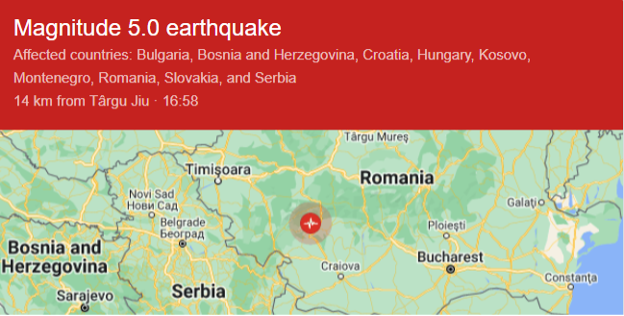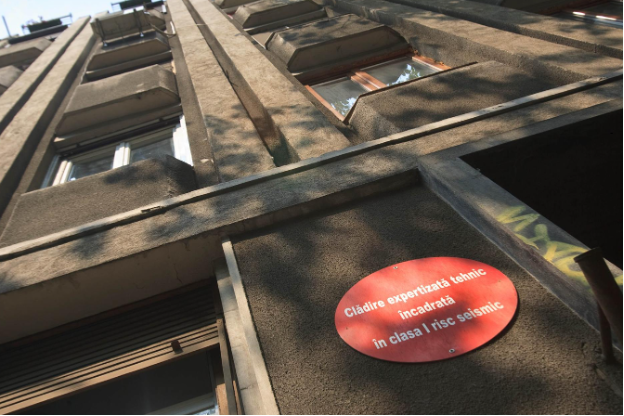
Please follow us on Gab, Minds, Telegram, Rumble, GabTV, Truth Social, Gettr, Twitter
The 5.2 magnitude earthquake had its epicenter in Gorj county, Romania. It was also felt in Bulgaria, Bosnia and Herzegovina, Croatia, Hungary, Kosovo, Montenegro, Slovakia, and Serbia.
The official statement from the National Research-Development Institute for Earth Physics says: "On February 13th, 2023 at 16:58:06 a significant earthquake with a magnitude of 5.2 took place in Oltenia, Gorj county at a depth of 15 km. The epicenter was at 102km SW of Sibiu, 107km NW of Craiova, 137km W of Pitesti, 166km E of Timisoara, 179km S of Cluj-Napoca, 183km SE of Arad, 196km W of Brasov, 218km E of Belgrade, 222km E of Zemun, 224km W of Ploiesti.”
A 3-magnitude aftershock was felt 20 minutes later. A third aftershock of 3.2 magnitude was felt at 6 PM local time.
The first earthquake was felt strongly in the West and Center of Romania, in the region of Transylvania. Short power and internet outages were reported in some parts of the country, but no damages or losses of human life. Local media reports the earthquake created slight panic in Serbia (Niš, Belgrad, Zaječar, Požarevac, Svilajnec, Jagodina, Paraćin and Vršac) and in the Bulgarian cities along the Danube.

Romanian authorities have been worried about the eventuality of a strong earthquake in the area, especially considering over 350 buildings in the capital are marked as unsafe, with a red sign that reads "earthquake risk class I”. In 1977, a 7.4-magnitude earthquake killed over 1,500 people, 1,400 of them in Bucharest. Experts from the Municipal Committee for Emergency Situations predict that if another strong earthquake hits Bucharest, over 1,000 buildings would collapse, and another 23,000 would be damaged, killing around 7,000 people.